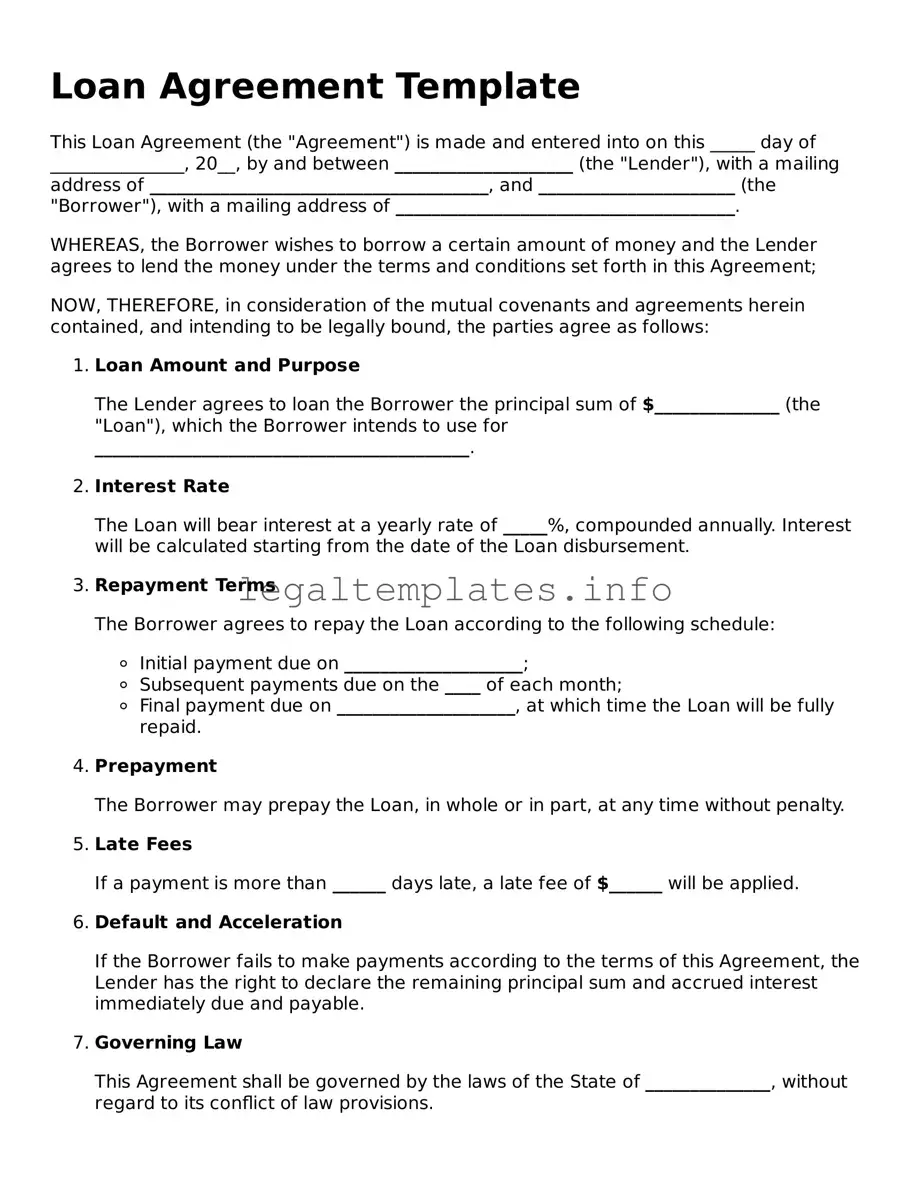A Promissory Note shares similarities with a Loan Agreement, as both documents outline the terms under which money is borrowed and must be repaid. Where they differ primarily is in their complexity and detail; a Promissory Note is typically more straightforward and concise, focusing on the basic terms such as the amount borrowed, interest rate, and repayment schedule, without the extensive clauses and covenants often found in a Loan Agreement.
A Mortgage Agreement is similar to a Loan Agreement in that it is a binding document between a borrower and lender that outlines the parameters of a loan. The key distinction is that a Mortgage Agreement specifically involves real estate as collateral to secure the loan. This means if the borrower fails to meet the terms of the agreement, the lender has the right to take ownership of the property.
A Personal Guarantee is akin to a Loan Agreement because it involves a commitment to pay back borrowed money. However, a Personal Guarantee is an additional assurance, typically provided by an individual such as a business owner, which promises that if the original borrower cannot repay the loan, the guarantor will take responsibility for the repayment, adding an extra layer of security for the lender.
The Debt Settlement Agreement shares similarities with a Loan Agreement, with the primary focus on addressing the terms for repaying borrowed money. The crucial difference lies in the intent and context: a Debt Settlement Agreement is used when the borrower is unable to repay the loan under the original terms, and thus, the parties negotiate a modification, often reducing the overall amount owed in exchange for a new repayment plan.
A Line of Credit Agreement, while similar to a Loan Agreement in its purpose of outlining borrowing terms, offers more flexibility. It allows the borrower to draw funds up to a specified limit over a set period, making it different from a traditional loan which disburses a lump sum amount at the outset. Interest is typically only paid on the amount actually withdrawn, making it adaptable to fluctuating financial needs.
An Installment Sale Agreement bears resemblance to a Loan Agreement as they both involve the provision of funds up front, which are to be repaid over time. However, an Installment Sale Agreement is specifically used in the context of purchasing goods, where the buyer does not pay the full price upfront but agrees to make regular payments until the total cost is covered, often including interest.
An Employment Agreement parallels a Loan Agreement in the sense that both establish a formal relationship between parties with specific obligations. In an Employment Agreement, the terms include compensation, duties, and duration of employment, rather than terms of borrowing and repayment. However, both types of agreements are legally binding and outline the conditions of the relationship.
A Service Contract has similarities with a Loan Agreement as it is a legally binding agreement that specifies the terms of engagement between two parties. In a Service Contract, the focus is on the provision of services for compensation, outlining duties, quality standards, timelines, and payment terms. This contrasts with a Loan Agreement, which details the terms for borrowing and repaying money.
An Intellectual Property (IP) License Agreement, like a Loan Agreement, is a formalized arrangement between parties. However, instead of dealing with loans, an IP License Agreement grants permission to use intellectual property, such as patents, trademarks, or copyrights, under defined conditions. It specifies terms such as scope of use, royalties, and duration, signifying how legal agreements can govern a variety of exchanges and permissions.
